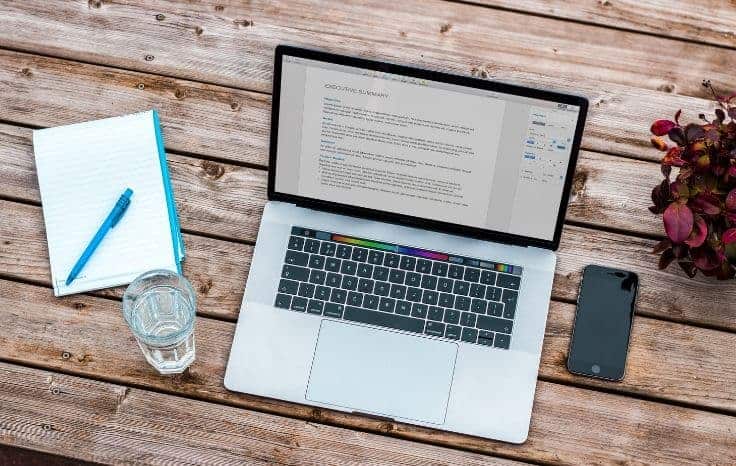Sharing is caring!
This week Julie Lause is sharing how automating her finances helped her through some tough financial times. In her guest post below, she’ll tell you exactly how you can automate your finances to reach your financial goals.
If you’ve got big financial goals but can’t seem to make traction, automating your finances might just be the best way to achieve financial freedom.
Like most people, I’ve seen my share of dark times financially. In the middle of one of those dark times, I created this automation system for managing my finances that was the key to getting myself out of a financial hole.
Automating Finances to Solve a Financial Crisis
In 2004, I bought my first home. It was a huge achievement– as a teacher I didn’t make too much money to begin with and I used all my savings for the down payment. I spent a year renovating the house with 0% interest credit cards. Then, one year later those same cards turned into 13% interest cards.
I had to refinance the home to weave in the credit card debt.
It wasn’t a bad plan: I had a lot of equity in the home, the renovation had gone well, and I would get a lower interest rate on the refinance.
And then Hurricane Katrina struck. My refinance was off.
So there I was: relocated in Houston with rent to pay, a mortgage payment to make back home, and now $40,000 of high interest credit card debt. No savings (I spent it all to buy the house), making less than $35,000 a year as a public school teacher, and no wiggle room.
I couldn’t afford even the minimum payments on all the credit cards that were now due. I defaulted on my mortgage. It was pretty hopeless.
I made a deal with my mortgage to delay payments three months to get on my feet.
And in that time I created a plan that would put me on a path to financial freedom. I knew it would take a while, but I was able to use this plan to get out of debt, get to a more stable financial place, refinance again when things changed a year later, and meet all my financial obligations knowing how much I could spend.
Basics of Automation: a Down-to-Zero budget
Whether you make $30,000 a year and have no wiggle room, or you have a lot to spare, this automation system works to help you meet your financial goals without taking a penny-pinching approach.
The idea behind a zero-sum budget (or what I call a Down-to-Zero budget) is that you create a budget based on your income and your goals.
After handling bill pay, savings, debt repayment, and planning for irregular expenses and emergencies, the remaining money is your spending money for the month.
This way, you know you are meeting your financial obligations first BEFORE you spend all your money on fun stuff.
You’re making it inevitable you meet your goals.
And then you make it EVEN MORE INEVITABLE you automate the whole plan online.
What if, on top of making a a plan and meeting your goals you never had to think about it again? That’s where automation comes in.
Rationale for Automating your Finances
The idea behind automating your budget is that, once you make your financial decisions, they don’t need to be made repeatedly. You can set them and forget them if you make the right plan.
This plan is based on three key principles:
1. Start with Rational Decisions, Not Impulses
Let’s face it, we make our best decisions about money when we’re not standing in front of the $1 section at Target. Do your work first.
Sit down with your finances, get honest, and make a plan that will work for your goals.
Related: The Easiest Way to Make a Monthly Budget
Determine how much you need to spend to pay your bills and live on, and then make a rational plan to contribute to savings, debt repayment, emergencies, and annual expenses.
2. Spend What You Have – Not More
So don’t let yourself see what you have.
That feeling of flushness when we get paid, the feeling that we can afford those tickets or those pants or that trip: we have to stop letting ourselves feel that.
The money in our bank account at the beginning of the month is not extra money to buy extra stuff. It’s spoken for money. That money has plans, and those plans were made by you already. You are not in charge of those plans every month.
Instead, leave yourself as much cash as you need to live on each month (plus some room for fun stuff like lattes and the zoo and a pair of pants).
It’s difficult to spend less money than we already do, and it’s also pretty clear from the research that, the more money we make, the more we spend. Think about the last raise you got: is that making you feel MORE rich or does it feel the same? If it feels the same it’s because you are spending MORE than you used to but you can’t really tell.
We’re not talking about starving yourself or living from a deficit mindset, but don’t let the decisions about what needs to happen with your money be at the mercy of your impulse spending. Make those decisions before it’s time to spend.
3. We Don’t Prepare for Emergencies
Emergencies happen. Whether it’s a busted tire or Beyonce tickets going on sale, you will want to make a plan that accounts for the emergencies that come up.
That means putting aside a little each month into an account for emergencies.
Related: Easiest Tips To Start an Emergency Fund Now
We also need to think about planning for those bills and expenses that don’t come up monthly but still happen regularly. This includes tuition, taxes, summer camp, and vacations. These expenses come up and we are STUNNED, just stunned that here it is, June again, and we have to pay for summer camp.
The consequences of not planning ahead for these expenses is we either derail our savings and debt repayment that month to afford the $1000 tuition bill, or we put it on the credit card.
This begins a cycle of debt that can be difficult to break.
The truth is, if we can make a plan we can still meet our financial goals despite these emergencies or irregular expenses.
How to Automate Your Finances
Take these steps to create a plan that makes paying down debt, saving for retirement or college, and affording your life inevitable.
Create Financial Clarity
The first thing you need to do before you automate is get really clear about your financial situation, what your goals are, and how much you can live on.
- Use my free financial planning templates to set goals and figure out how much you will set aside each month for bill pay, savings, debt repayment, emergencies, and annual expenses.
- Decide exactly how much spending money you need to live on each month using your debit card or cash. This is gas money, the yard guy, yoga class, and trips to the aquarium.
- Get strategic about making a schedule so that you have a plan to never miss a payment, even if you’re paid twice a month or weekly.
Set Up Your Bank Automation
Next, set up your bank accounts so you never see your whole paycheck again.
When the money comes in to your account, you route it to at least four accounts: your spending account, bill pay account, annual savings account, and your savings account. You could also decide to create an emergency account separate from savings.
Creating these accounts is simple— you can do it online with your bank in about ten minutes.
I suggest having your direct deposit sent to the account you call SPENDING and then move money to bill pay, savings, and annual savings from there. This is super easy if you use recurring account transfers.
You will need to do some work to determine the timing of each payment and ensure that your paychecks coincide with the amounts you need in each account. My financial planning templates can support you— one sheet deals directly with timing issues.
Once you have your accounts set up and your account transfers automated, set up your bill pay so every monthly bill you have comes out of the same bill pay account and is automatically paid at the time you choose.
Instead of struggling each month, you will instead watch the money move from account to account, paying your bills magically, and building up your savings without lifting a finger.
If you’re committed to meeting your financial goals with the money, you have (not the money you’ll have someday), this plan helps you go from financial crisis to solid plan. AND you can make it inevitable if you automate the whole darn thing!

Julie Lause is a school principal by day and a blogger by night. Over at The Bossy House she writes for women taking charge of it all, from work to parenting to the house to the world! Check out her FREE financial planning templates that will set you on the path to financial freedom. Clean up your finances in just 2 hours!






10 thoughts on “How to Automate Your Finances”
Great approach. I use budgeting software and do the zero-sum as well. I haven’t opened several accounts but I plan to open a new savings account soon! I am absolutely appalled at how little teachers are paid in the US!!! My mother makes over twice that much as a teacher and we live in the lowest paid province for teachers in Canada!
When we started using multiple accounts it really made it so much easier to track and manage our savings and other expenses. And I agree…teacher pay in some states is appalling!
This is SO smart and helpful! One of the best things I ever did was sit down and figure out exactly what my expenses were each month versus my income, so that I could do away with that the uncertainty and anxiety of not knowing how much wiggle room I had. I learned the difference between financial anxiety over not being able to pay the bills, and financial anxiety over not knowing where you stand – and both just require getting into the nitty-gritty of your spending and having the willpower to do what you know you need to. Also – I’m so sorry to hear about Julie’s difficulties. Katrina seemed like such a nightmare, particularly for homeowners, so I’m so glad she’s in a better place now!
I agree Robin!
Robin, you’re so thoughtful. I’m glad the post was helpful!
I think that automation is crucial to financial success. I set my up years ago, and have not paid a late fee in more than 10 years. That is a huge savings! Great information.
Once we set up automatic payments, it helped us focus our budgeting time on other activities rather than keeping up with the bills. I think it’s especially important to have an automatic savings transfer rather than waiting to see what’s leftover at the end of the month.
This entire post is so valuable! Thanks to Julie for sharing her knowledge. I’ve come to find that knowing and being in control of my finances really takes a load of stress of me. Automatic is a great way to help relieve just a bit further. We just bought a house and we already have an emergency fund put into place…it’s the emergencies that will throw months worth of panic onto a finely tuned budget. Thanks for the templates too!
Congrats on the new house! The emergency fund is so important, especially as new homeowners. Julie’s templates ARE great. I’m so glad you found them useful.
I think this plan would really work for me. When I see extra money in my account, I immediately think of all the ways I can spend it LOL! Automatically transferring it before I even see what’s there will definitely help with my impulse spending.